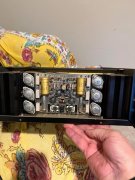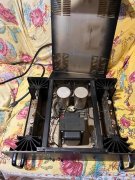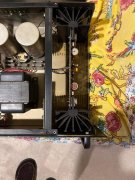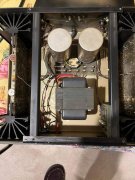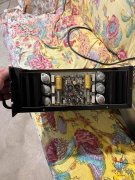jhsellers
New Around These Parts
Hello, all.
Wondered if anybody here has experienced the Leach amp?
http://leachlegacy.ece.gatech.edu/lowtim/
The late Marshall Leach was my advisor when I was in school. He was considered an eminent authority on audio technology in his time, but I've no idea how that equates to recent advances in equipment. I built his pre-amplifier design as my senior project, but never got around to building the amp. Several of my colleagues built the amp; output power was only limited by the size of transformer you wanted to splurge for (rail voltage, and TX capacity). (as well as the number of final stage transistors, of course )
I have a couple of boards for the amp driver circuit; I'd be glad to let them go for shipping cost if anyone's interested. It might take me a bit to locate - I'm in the process of moving everything; relocation due to recent retirement - so I'm not sure how quickly I can find them. ( and please realize that they're 40 years old too.....)
Leach also had speaker designs that he made public. There is no telling how many of these speakers are still around - I recall almost everyone saying they had built a pair of his speakers. I also fondly remember his lab at Georgia Tech - it was a showcase for state-of-the-art audio during the last quarter of the 20th century.
Reminiscing a bit.....
John
Wondered if anybody here has experienced the Leach amp?
http://leachlegacy.ece.gatech.edu/lowtim/
The late Marshall Leach was my advisor when I was in school. He was considered an eminent authority on audio technology in his time, but I've no idea how that equates to recent advances in equipment. I built his pre-amplifier design as my senior project, but never got around to building the amp. Several of my colleagues built the amp; output power was only limited by the size of transformer you wanted to splurge for (rail voltage, and TX capacity). (as well as the number of final stage transistors, of course )
I have a couple of boards for the amp driver circuit; I'd be glad to let them go for shipping cost if anyone's interested. It might take me a bit to locate - I'm in the process of moving everything; relocation due to recent retirement - so I'm not sure how quickly I can find them. ( and please realize that they're 40 years old too.....)
Leach also had speaker designs that he made public. There is no telling how many of these speakers are still around - I recall almost everyone saying they had built a pair of his speakers. I also fondly remember his lab at Georgia Tech - it was a showcase for state-of-the-art audio during the last quarter of the 20th century.
Reminiscing a bit.....
John

